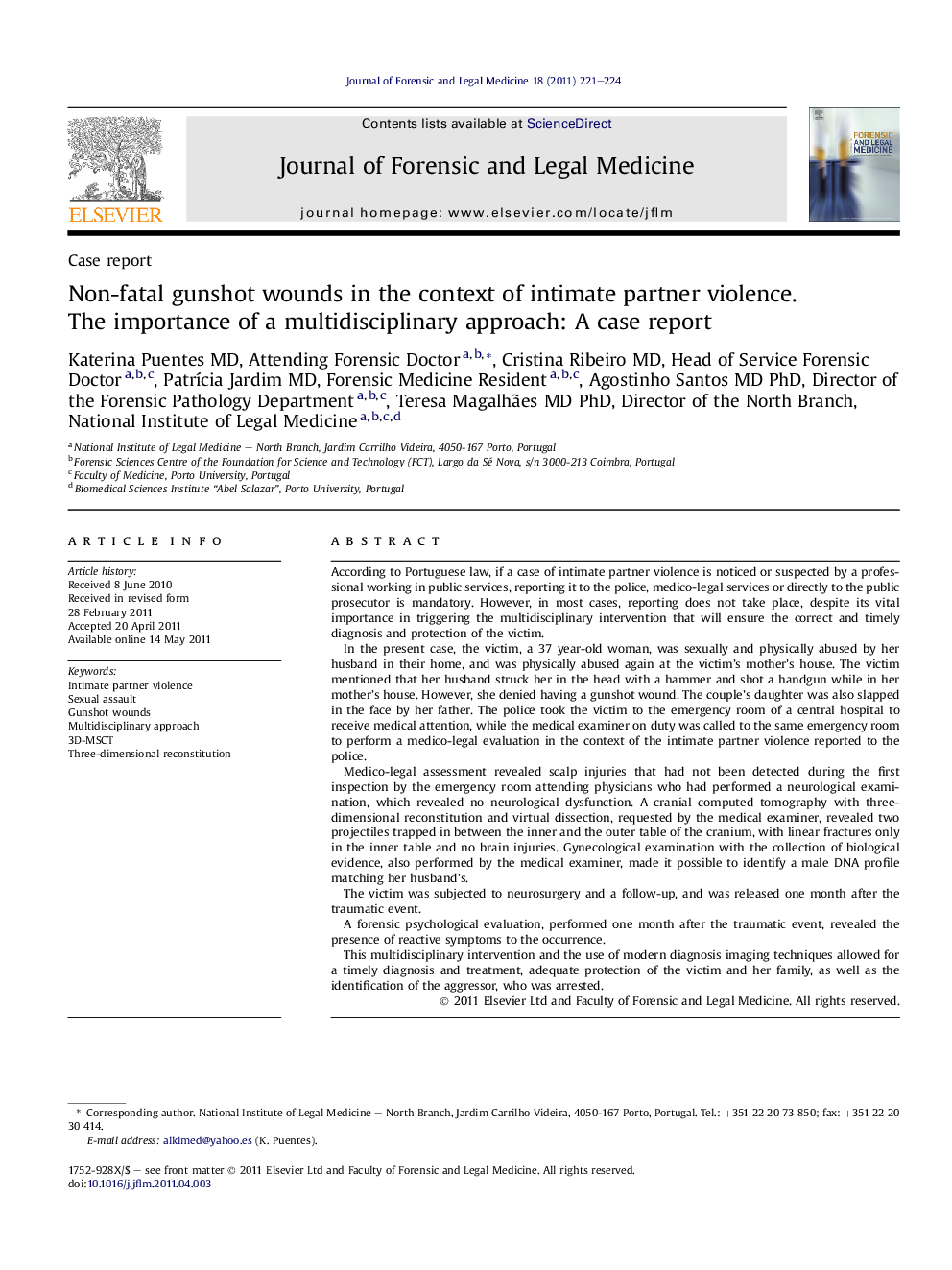| Article ID | Journal | Published Year | Pages | File Type |
|---|---|---|---|---|
| 102423 | Journal of Forensic and Legal Medicine | 2011 | 4 Pages |
According to Portuguese law, if a case of intimate partner violence is noticed or suspected by a professional working in public services, reporting it to the police, medico-legal services or directly to the public prosecutor is mandatory. However, in most cases, reporting does not take place, despite its vital importance in triggering the multidisciplinary intervention that will ensure the correct and timely diagnosis and protection of the victim.In the present case, the victim, a 37 year-old woman, was sexually and physically abused by her husband in their home, and was physically abused again at the victim’s mother’s house. The victim mentioned that her husband struck her in the head with a hammer and shot a handgun while in her mother’s house. However, she denied having a gunshot wound. The couple’s daughter was also slapped in the face by her father. The police took the victim to the emergency room of a central hospital to receive medical attention, while the medical examiner on duty was called to the same emergency room to perform a medico-legal evaluation in the context of the intimate partner violence reported to the police.Medico-legal assessment revealed scalp injuries that had not been detected during the first inspection by the emergency room attending physicians who had performed a neurological examination, which revealed no neurological dysfunction. A cranial computed tomography with three-dimensional reconstitution and virtual dissection, requested by the medical examiner, revealed two projectiles trapped in between the inner and the outer table of the cranium, with linear fractures only in the inner table and no brain injuries. Gynecological examination with the collection of biological evidence, also performed by the medical examiner, made it possible to identify a male DNA profile matching her husband’s.The victim was subjected to neurosurgery and a follow-up, and was released one month after the traumatic event.A forensic psychological evaluation, performed one month after the traumatic event, revealed the presence of reactive symptoms to the occurrence.This multidisciplinary intervention and the use of modern diagnosis imaging techniques allowed for a timely diagnosis and treatment, adequate protection of the victim and her family, as well as the identification of the aggressor, who was arrested.
